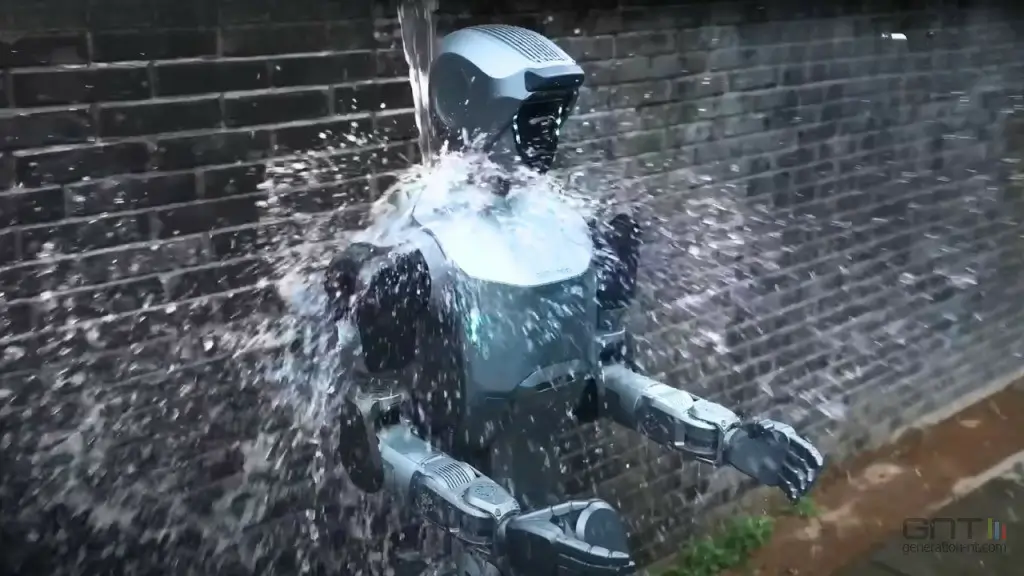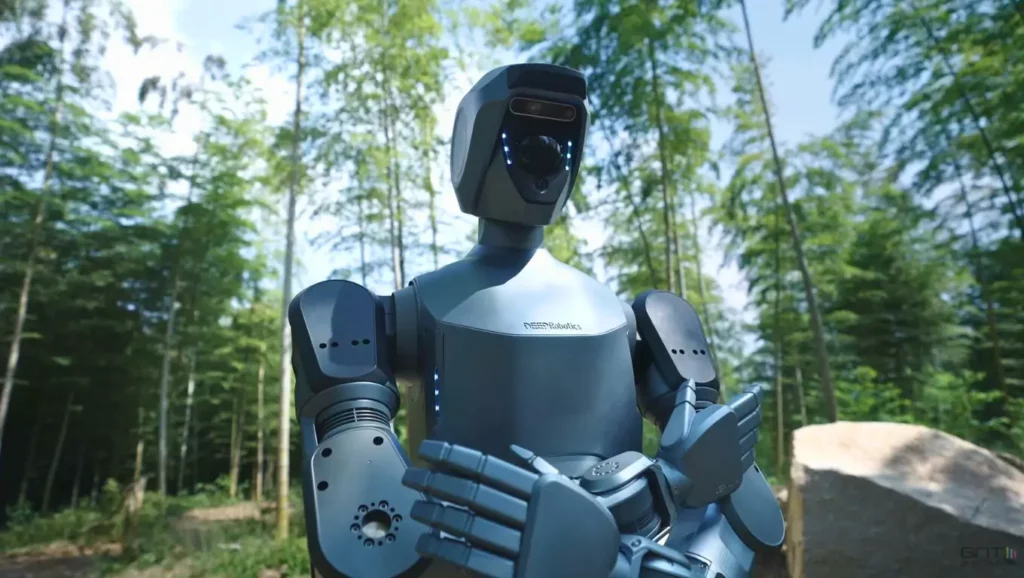They walk in the rain, smile at customers, and fold laundry better than I do on a Sunday evening. In China, a new generation of humanoid robots is emerging from tech showcases to become part of everyday life, with models capable of interacting, learning, and assisting humans with household and professional tasks.
The DR02 by Deep Robotics: A Versatile Robot Ready to Leave the Lab and Conquer the Real World
Let’s start with a striking example. Under a torrential downpour in Hangzhou, the DR02 remains unfazed. Standing at 1.75 meters tall, walking at 4 m/s, carrying 20 kg, and operating in temperatures ranging from -20 to +55 °C, this robot from Deep Robotics marks a significant milestone. We are transitioning from showroom prototypes to fully operational machines.
In other words, we are moving from demonstration to real-world application. Durable, resilient, and precise, it represents the ideal logistical or maintenance agent. Moreover, it is certified IP66, solid evidence that this equipment is designed for the field, not just high-tech exhibits. The goal? To make the DR02 an everyday tool in various industries—think of it as an exoskeleton 2.0.

When Robots Become Salespeople, Guides, and Multilingual Companions in Real-Life Scenarios
Continuing our overview with Wuhu. During the Chery 2025 conference, another humanoid took the spotlight: Mornine from AiMOGA Robotics. It conducted a car sales demonstration entirely on its own, speaking in eleven languages. Greeting customers, explaining models, opening doors—all without a glitch.
The achievement here is not just technical; it’s fundamentally experiential. These robots are stepping off the exhibition floors. They are entering real-life scenarios, and that changes everything. Once you see a robot fluently speaking seven languages and deftly handling fragile items, you start to wonder: “Why not in my home, soon?”
The Accelerated Industrialization of Chinese Robots Aims for Mass Deployment in Homes and Businesses
Simultaneously, another strong signal emerges from the 2025 Canton Fair, further confirming the trend. Robots are for sale. Over 46 companies, 207,000 buyers, and representation from 217 countries. Import contracts are already in the works. At Unitree Robotics, ambitions are high. The humanoid H2 folds laundry and navigates factories successfully, attracting interest from Alibaba, Tencent, and Geely.
Meanwhile, other players are advancing. AheadForm offers expressive faces. Kepler bets on a Bumblebee robot priced at $34,000. In short, China is no longer just producing robots for show; it is creating deliverable, testable, and improvable products at a rapid pace.

China Prepares for a Society Where Humanoid Robots Will Be Ubiquitous by 2045
To delve deeper, just look at the numbers. 100 million robots by 2045. Not gadgets, but humanoids designed to work, assist, and sell. Beijing is investing 170 billion yuan. The objective? Integrate robotics into every sector—factories, services, and homes.
In comparison, the United States is betting on AI with Tesla and its Optimus robot. China, however, is moving faster. It is industrializing at a breakneck speed. Sensors, joints, embedded AI—everything is manufactured locally. While others are still testing, China is deploying.
And where do we fit into all this? On one hand, there is fascination; on the other, questioning. But one thing is certain: this revolution is happening right before our eyes. It’s no longer a question of whether humanoids will arrive, but rather when and how they will transform our lives.




